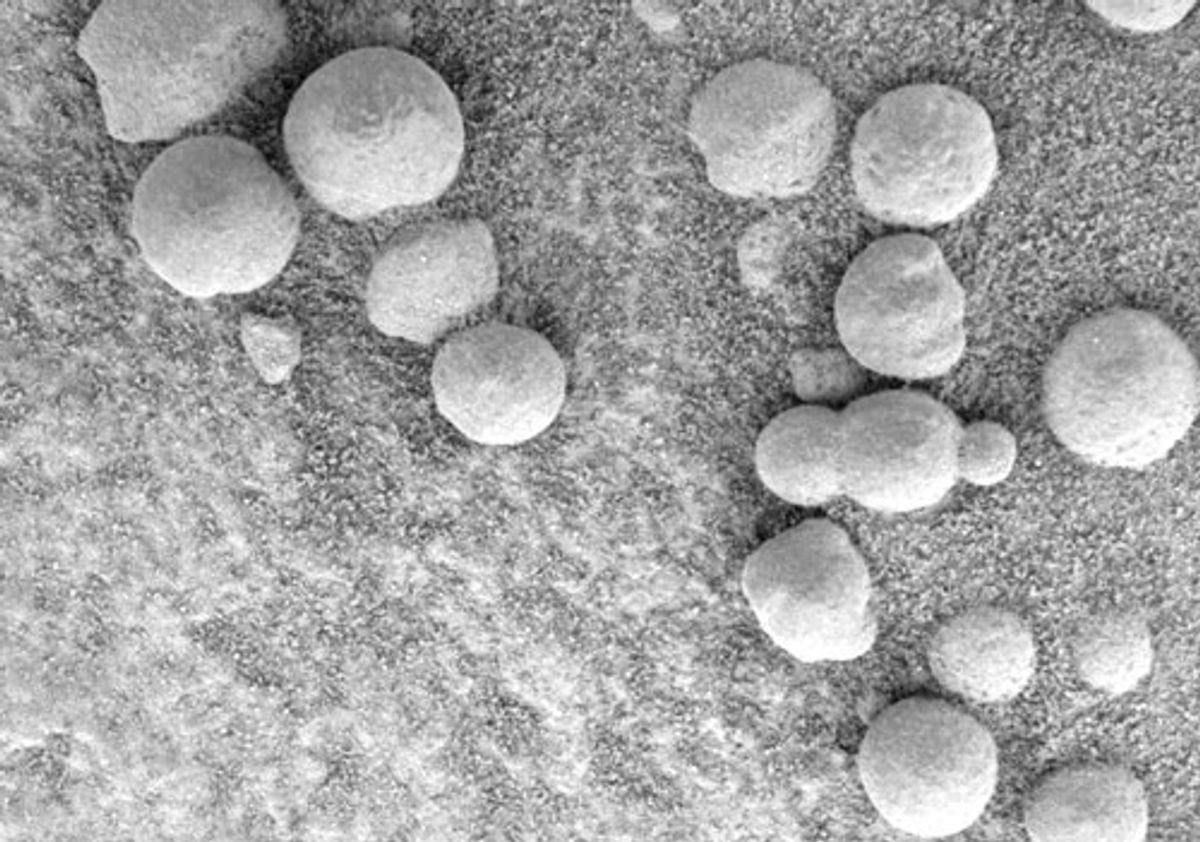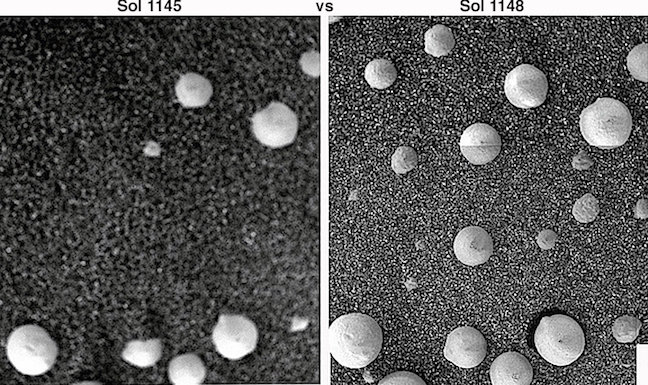The argument was made in a preprint study that had not been peer-reviewed in the May 2021 issue of the journal Advances in Microbiology. In it, researchers claimed that NASA rovers and Mars orbiters collected visual evidence of fungi on Mars — a claim that has been widely contested by the broader scientific community.
In early May 2021, several authors of a preprint study published in the scientific journal Advances in Microbiology argued that photographs collected by NASA rovers and Mars orbiters showed evidence of what they believed could prove that fungi were found growing on the red planet. Soon after, headlines and social media chatter sprouted up, claiming that science had found mushrooms on Mars.
Let's look at what was actually published and, importantly, the format in which it was published.
In the non-peer-reviewed study titled, “Fungi on Mars? Evidence of Growth and Behavior From Sequential Images,” credentialed researchers Rhawn Gabriel Joseph, as well as Xinli Wei from the Chinese Academy of Sciences and astrophysicist Rudolph Schild from Harvard-Smithsonian, studied images taken by NASA’s Curiosity rover and the orbiting HiRISE craft. In their 69-page paper, the scientists argued that the photographs provided evidence that mushrooms had appeared and disappeared over a period of several days, weeks, and months, some of which had even sprouted in tracks left behind by the rover. (The entire preprint study can be downloaded here.)
At the time of this writing, the study was published in preprint, which means that it was in its early stage of production and had not yet been peer-reviewed and critiqued by other scientists. As Snopes has previously explained, research that has not been peer-reviewed has typically not been rigorously vetted by other researchers who can highlight discrepancies, limitations, and other errors in observations required before publishing the study in a reputable journal.
The team went on to describe their analysis of nine “spherical specimens” that they claimed were similar to fungal puffballs on Earth. These nine were photographed at a location known as Sol 1145 that the scientists compared to an additional 12 specimens they claimed had “emerged from beneath the soil” at another location known as Sol 1148. The original nine could reportedly be seen closer together with expanding diameters, which suggested that they may have been growing and multiplying.
The researchers claimed that many of these so-called “puffballs” also had “stalks." Described as “chalky-white colored spherical shaped specimens upon the surface,” the researchers also claimed that these “puffballs” were previously misidentified as hematite. (NASA has said otherwise.)
The photos themselves are real. Some were taken over several missions in the early 2000s and showed mineral spherules nicknamed “blueberries” for their size and shape. These blueberries are one of the best-known discoveries of the Opportunity mission and have been previously identified as Martian rocks, sand, dust, and ice — potential evidence for a once “watery ancient environment” on Mars, but not for a biologically active one today.
Many of the factors described in the preprint study have also been known to exist on Earth as features that occur from geochemical changes and by erosion from the wind. For example, researchers at the University of Utah predicted the blueberries would be found on Mars because that same process exists on Earth.
“We came up with the ‘recipe’ for blueberries,” said Marjorie Chan, chair and professor of geology and geophysics at the University of Utah, at the time. “Before Opportunity landed, we thought there might be hematite concretions on Mars. That was based on our study of hematite-rich regions of southern Utah, where hematite balls are found in national parks and have long been a geological oddity that shows up in many rock shops.”

The preprint study authors acknowledged that their work does not necessarily provide proof of life on Mars but instead suggests that there could be. As such, we have rated this claim as “Unproven.”
“Similarities in morphology are not proof of life. It is possible that all the specimens presented here are abiotic. We cannot completely rule out minerals, weathering, wind, and unknown geological forces that are unique to Mars and unknown and alien to Earth,” they concluded in the study.
“However, growth, movement, alterations in location and shape, constitute behavior and coupled with life-like morphology, support the hypothesis there is life on Mars."


